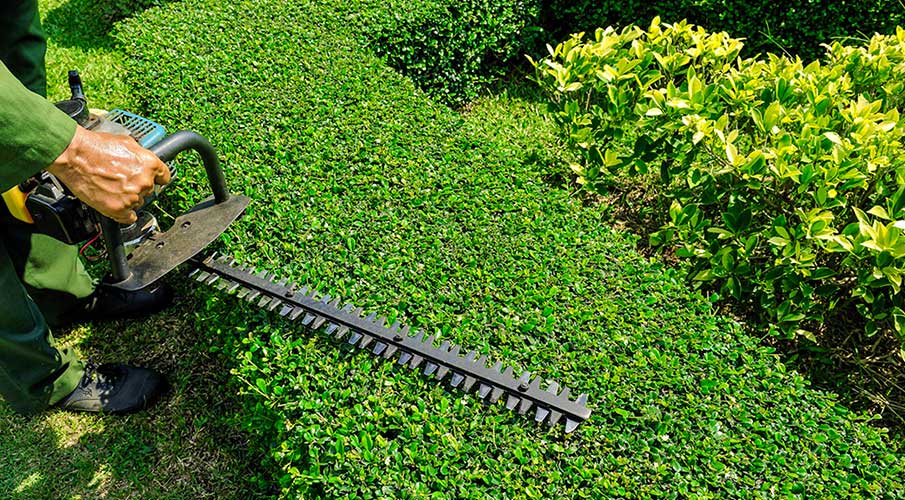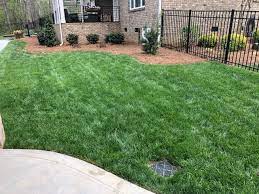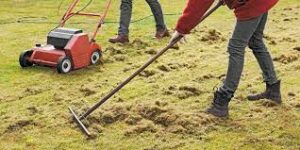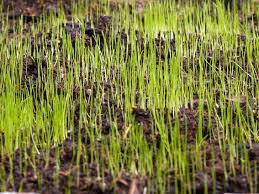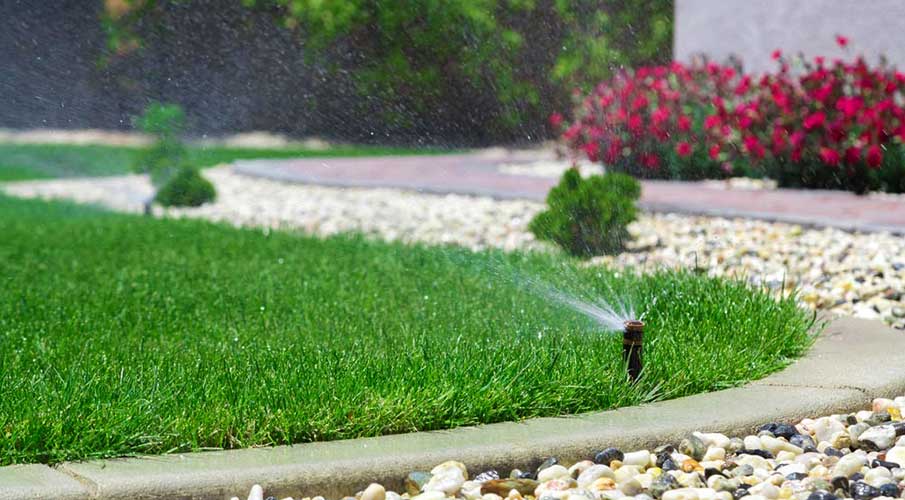As a homeowner, you may have heard about the importance of dethatching your lawn, but may not be sure exactly what it entails. It’s a part of regular maintenance for a healthy lawn. In this article, we will discuss the basics of dethatching, including what it is, why you should do it, when to do it, and how to do it.
What is Thatch?
Thatch is a layer of dead grass, leaves, and other organic material that accumulates on the surface of a lawn. A small amount of thatch can be beneficial for a lawn. It helps to insulate the roots and conserve moisture. Although excessive thatch can prevent water and nutrients from reaching the soil, and can lead to a variety of problems, including disease, pests, and poor growth.
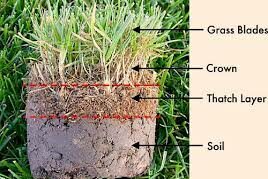
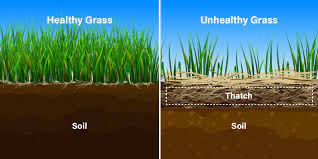
What is Dethatching?
Dethatching is the process of removing the layer of thatch from a lawn, using specialized equipment or manual labor. Dethatching can be done using a dethatching rake, which has sharp tines that penetrate the thatch and remove it, or a power dethatcher, which uses spinning blades or flails to break up and remove the thatch.
Why Should You Dethatch a Lawn?
Dethatching is important for maintaining a healthy lawn. Excessive thatch can prevent water and nutrients from reaching the soil. The water can instead get trapped in the thatch layer, which dries out quickly. This means with too much thatch, your watering may not even be having an effect! Thatch also creates an environment that is conducive to pests and disease. Bugs can thrive in a thick thatch layer and waterlogged thatch leads to humid conditions that promote funguses in the lawn. Removing the thatch allows for better air and water flow, which can promote root growth and improve overall lawn health. Since thatch is dead and brown, removing it can improve the appearance of a lawn, making it look more lush and vibrant. Getting rid of all that thatch also makes room for more healthy grass to grow. This means a thicker, greener lawn!

When to Dethatch a Lawn
The timing of dethatching depends on the type of grass in your lawn. Warm-season grasses, such as Bermuda grass, should be dethatched in the late spring or early summer, when they are actively growing. Cool-season grasses, such as fescue, should be dethatched in the early fall or early spring, when they are also actively growing. It is important to time dethatching with the growing season of the grass, as doing it at the wrong time can cause damage to the lawn.
Dethatching should be done when the thatch layer becomes thicker than 1/2″. If it is less than that it is still beneficial to lawn health. Creeping grasses will need to be dethatched more often, while fescue is the slowest to build a thatch layer.
How to Dethatch a Lawn
Dethatching can be done using several different types of equipment.
Manual Dethatcher
Also known as a thatch rake or a lawn rake, is a handheld tool that looks like a large rake with sharp, curved tines. It is designed to manually pull up and remove thatch from a lawn. It is a good option for small lawns or areas that require precise control.
Power Rake
Also called a dethatching machine, is a gasoline or electric-powered tool that uses a series of blades to cut through the thatch and pull it up to the surface. The machine has a set depth and can cover a larger area than a manual dethatcher. It is best suited for medium-sized lawns or lawns with thick thatch layers. It does less damage to the lawn than a vertical mower.
Vertical Mower
Also known as a verticutter or vertical slicer, is a more heavy-duty machine that uses rotating blades to slice through the thatch and lift it to the surface. Verticutters can be adjusted to different depths and are capable of removing more thatch than a power rake. It is recommended for larger lawns in need of renovation or areas with very thick thatch layers. It can also be used for aeration and overseeding.
Step-by-step Guide for Dethatching
Here is a step-by-step guide for dethatching with a power dethatcher:
- Mow the lawn to a short height, 2-3 inches and remove any excess debris.
- Adjust the blades on the power dethatcher to the proper depth, based on the thickness of the thatch.
- Begin dethatching, making passes over the lawn in a systematic pattern.
- Once the entire lawn has been dethatched, rake up all of the debris, and dispose of it properly.
It is important to note that dethatching can be hard on a lawn, and can leave it looking thin and bare in spots. To minimize damage, it is recommended to overseed the lawn after dethatching, to help fill in any bare areas. If planting fescue, you can read more about it in our article, Fall Grass Seed Planting. For Bermuda, read Planting Grass Seed in the Summer.
Conclusion
Dethatching is an important part of maintaining a healthy lawn and should be done on a regular basis, depending on the type of grass in your lawn. By understanding the basics of dethatching, including what it is, why you should do it, when to do it, and how to do it, you can ensure that your lawn stays healthy and vibrant for years to come.
Want help dethatching your lawn? Click here to get an estimate from Midwest Turf Pros.
